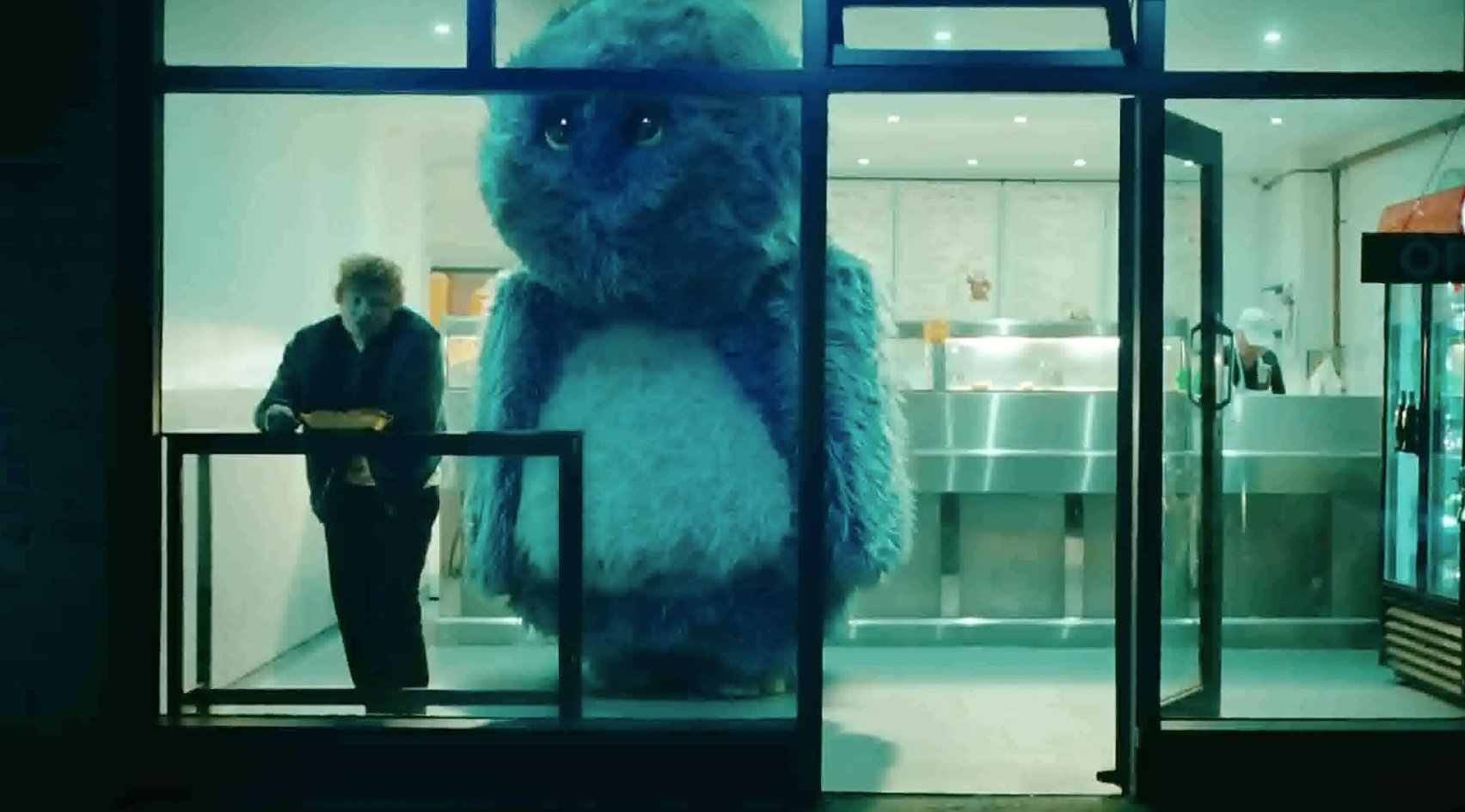
Focusing on Humanity with “Eyes Closed”
Natasha Braier, ASC, ADF confronts the monsters within for this Ed Sheeran music video.
Cinematographer Natasha Braier, ASC, ADF earned a 2023 MTV Video Music Award nomination for her work on Ed Sheeran’s music video “Eyes Closed,” based on the track from his sixth studio album, Subtract. The video is one of 14 from the “-” playlist that she shot for the performer in collaboration with director Mia Barnes.
“I was actually invited to do the whole album by Mia and her producer, Roisin Audrey Moloney, whom I worked with several times in the past,” says Braier. “I hadn’t worked with Mia before. We went to England and did all the videos for the album at once. Only a couple were officially called music videos — a lot of them were ‘visualizers.’ The idea was to do the whole album with the same kind of concept by the seaside with the water being a very strong visual element that is almost like part of the story.”
The entire visual album, almost an hour of content, plays as a loosely-tied-together tonal piece, “This visualiser concept is sometimes hard to grasp because it’s almost a music video — just with less coverage — but you also have to think in a different way right from the design perspective. You can have conceptual visual ideas that work, like holding a shot for a long time, and it doesn't feel like it is just a music video with not enough coverage. That expectation is taken away and you can just look at something for a while.”
Working on a tight production schedule, Braier had a day and a half out of the overall 14-day Subtract shoot to photograph “Eyes Closed.” And this piece stands out tonally from the rest to Braier: “This one is quite different because you barely feel the presence of the ocean. There’s water at the end, but it's more calm. There’s only one shot at dusk when [Sheeran] is walking in an alley and you feel the town where we shot everything. It was, in a way, quite separate from the rest as well because it had the idea of the monster. But I still think somehow they're connected because of the fact of shooting everything in the same place. There's some kind of same energy there.”
“I always light for the spaces, not really for the people or the monsters. it was more finding the lighting that supports the feelings of the song — this sadness.”

The video for “Eyes Closed” begins with Sheeran submerged in murky water, passed out after a car accident. It then cuts to him walking alone at dusk around an empty, melancholy town and drinking alone at a pub. It is soon revealed that a giant furry blue monster with wide eyes is following him wherever he goes. The monster grows progressively larger as the video goes on, looming over him. As Sheeran walks the streets, dances alone at the bar, or eats take-out alone late at night, the monster is always there behind him. Sheeran is never present with the other people populating the spaces he is in — he is stuck alone with his grief, his monster. When he passes other lonely pedestrians on the street, they have their own monsters next to them as well. The video ends with Sheeran alone on an isolated dock. He turns around and finally makes eye contact with his monster, who at this point is towering 20 feet over him.
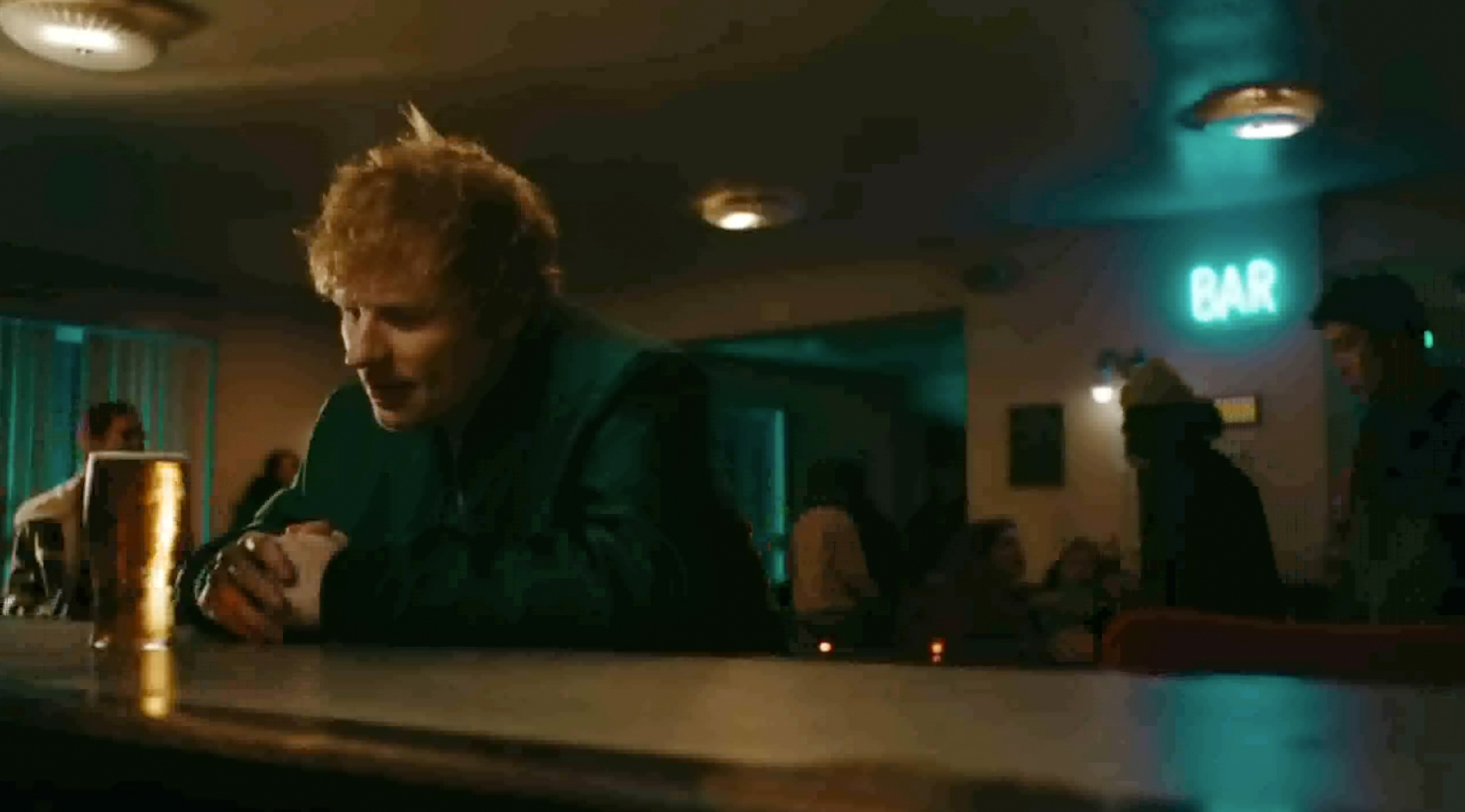
Braier was immediately drawn to the honest depiction of grief in the song: “It was really touching. Mia reached out to me, maybe, because she thought my work could resonate with the kind of feelings in the album. I just heard the songs and felt very moved. I knew that I could do something with that.” It was important to the cinematographer to ground the visual approach in realism and to focus on creating the emotional space that Sheeran is singing about, “I always light for the spaces, not really for the people or the monsters. it was more finding the lighting that supports the feelings of the song — this sadness. You’re in the middle of something that has a lot of life, but somehow you're not present, you're not vibrating with the same energy as the rest of the people, because you're in pain.”

Her lighting has a natural look, leaning into the contrast and the cooler tones of the places Sheeran inhabits. “The monster is there, like the sadness is there with you, wherever you go,” Braier explains. “It comes with you, but it doesn't have a spotlight. It’s kind of the silent thing that is inside you. Sometimes, you could be in the pub with your friends, trying to be present and trying to be dancing, smiling, but it's something that is inside. It was clear that I didn't have to do specific lighting for the monster. It didn't have to stand out. I would just light for the space, what was right for Ed’s relationship with the space. Then the monster would be there.”
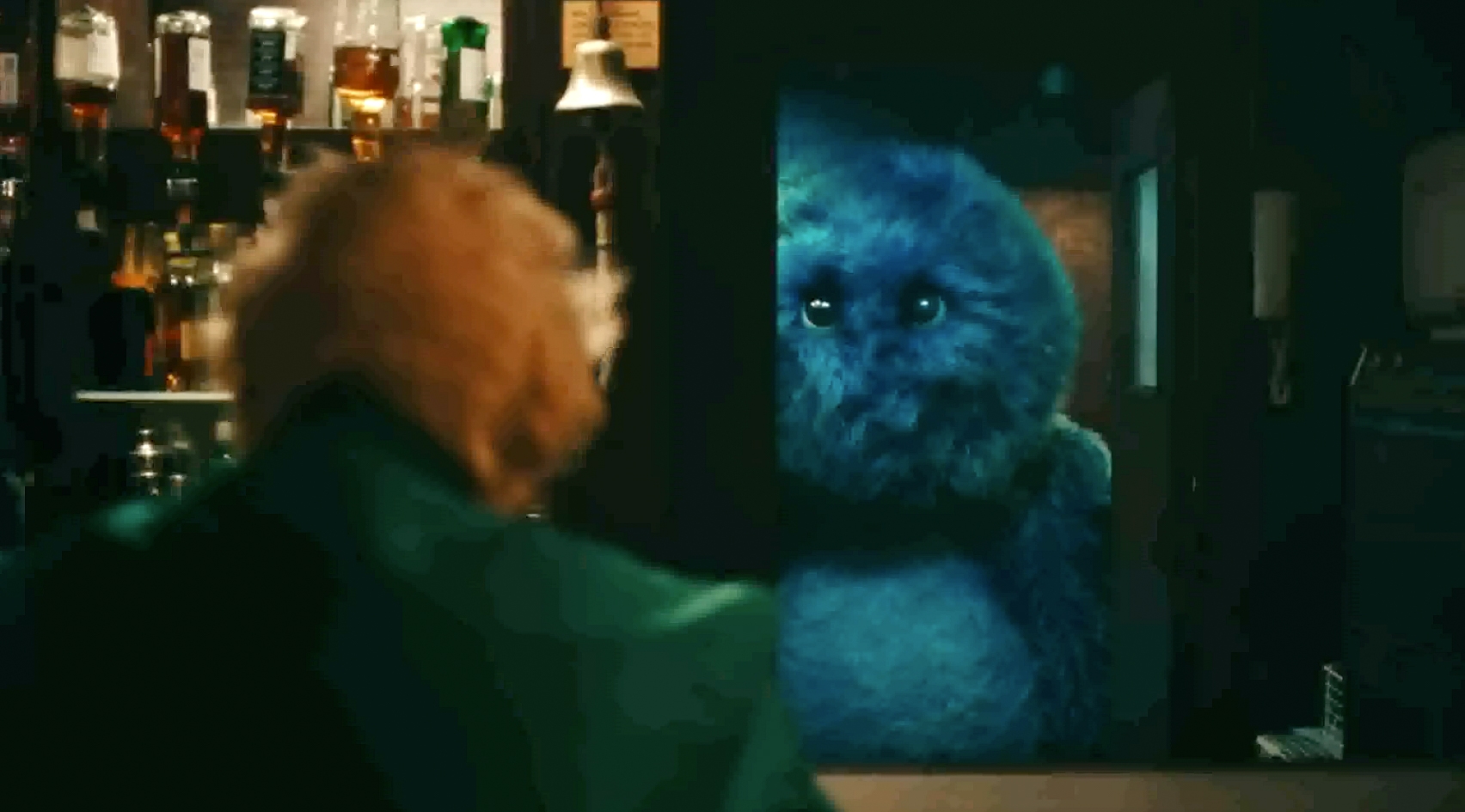
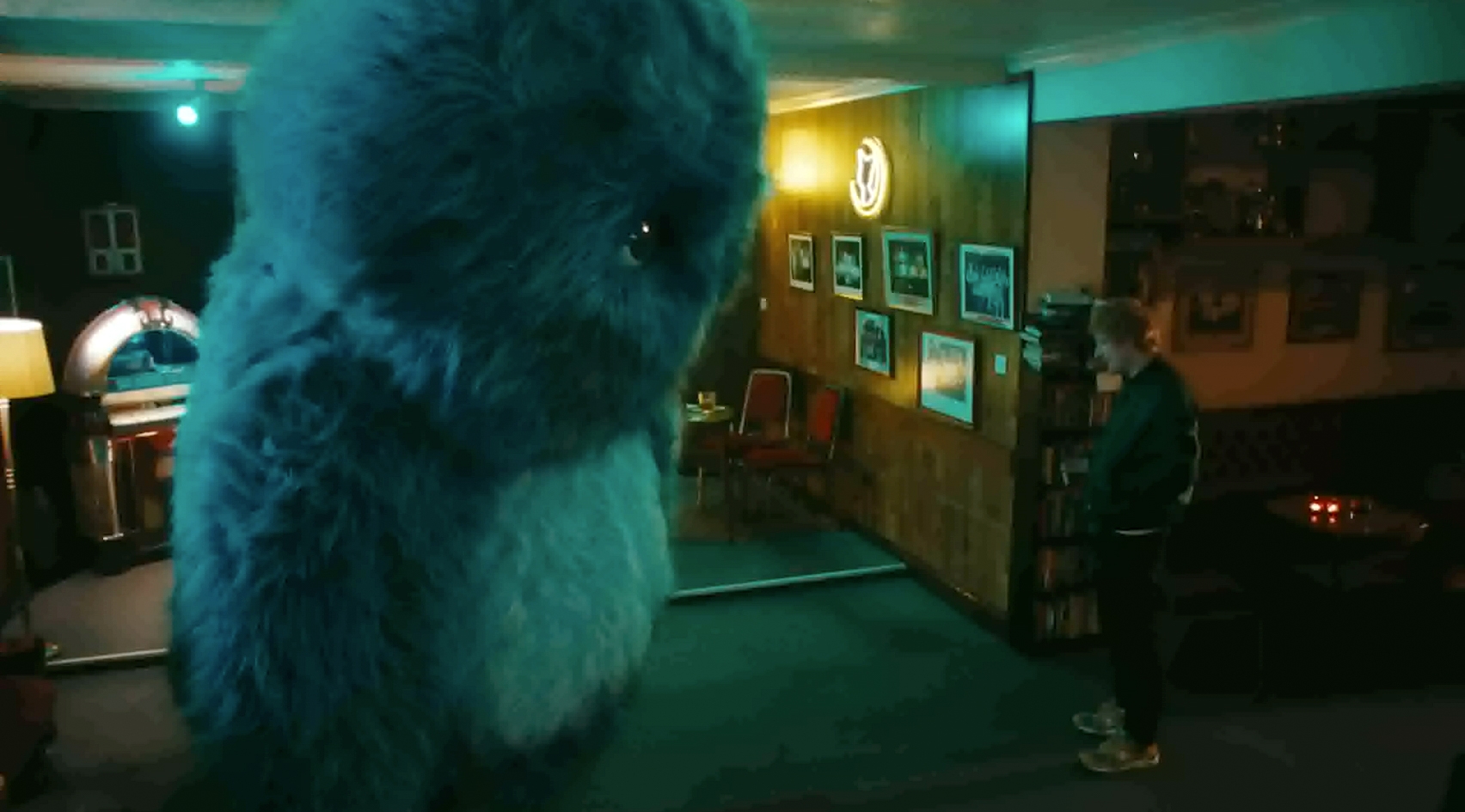
While there was no special lighting to draw focus to the monster, as Braier notes, “Many times we had to add a little bit of light so that you could see a bit more of the color, the blue [of its fur]. I was interested in keeping that tone, but I would just do it in a very invisible way where it doesn't feel that I'm lighting the monster.” There is often a subtle blue edge light to the sequences, augmenting the bleak emotional tone of the song.

Braier chose to shoot with an Arri Alexa Mini for the visual album because of its build versatility. Between all 14 videos, the cinematographer utilized Steadicam, cranes, dollies, and drones. She paired the Mini with Cooke S3 Panchros “because they have this vintage quality that makes it a lot more organic and filmic. It's easy to contaminate the lenses with flares. At the same time, because they're rehoused, they're very practical to put on a crane and remote heads.”
Working with the monster created a technical challenge as it grew and grew over the course of the video. Production had one monster costume, about the same size as Sheeran, “but the idea was that the monster would grow as the song developed. It's like the sadness inside him gets bigger and bigger. The monster at the beginning is maybe his same height, but then it grows. So, as the song develops, we had to shoot the monster on a green screen, so that we would be able to add it later and make it bigger.”
For a sequence in the pub bathroom where Sheeran is by himself, looking in the mirror, the monster costume was not yet finished. Braier shot the scene as she thought best to translate the feelings of isolation and grief. The colors are muted, and the lighting is toppy, cutting dramatically down over Sheeran into the corner where the monster was to be placed. Several weeks later, on the last day of the shoot, she was able to shoot the monster against greenscreen with a monitor overlay and match the lines of the lighting on the monster, which was to be projected much bigger than Sheeran in the corner of the bathroom.
When possible, Braier shot with the monster on location, at least for reference. Many shots required the camera to be locked off, with techniques such as double exposures and added greenscreens assisting in the process. In one case, where Sheeran sits alone at a diner booth, the monster was placed on apple boxes and shot at a camera angle to emphasize the height difference.
For the ending sequence on the dock, while the monster was present for reference, a Technocrane was needed to create the monster’s point of view, “The whole end sequence at the dock was challenging because the place is surrounded by something like quicksand. You can’t walk around the dock. All the places you wanted to put the camera were actually very dangerous. We had to bring in a Technocrane so we could put the base at the end of the dock and extend the arm to get over the quicksand to the right places where we wanted the shot.”

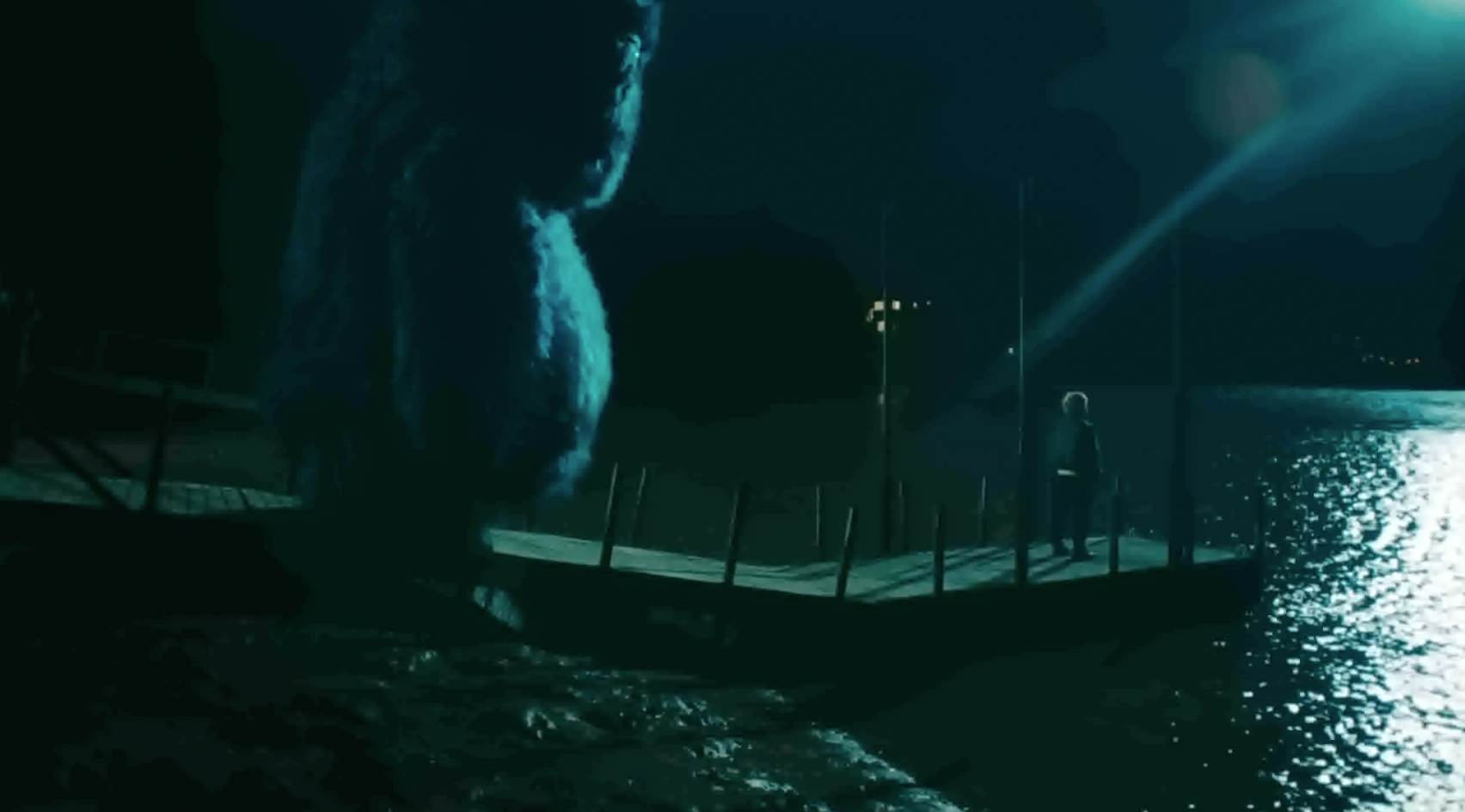
Braier was adamant that the heavy equipment not be used in any way that would break the natural, realistic feel to the video, “We wanted something that is very human and very grounded, like the rest of the video. To suddenly have Hollywood camera moves [wouldn’t work], but we did have to have the Technocrane in order to get to the simple wide shot as well as the monster’s point of view. All of that logistically was quite interesting. I love that the end scene has this surreal thing with the monster and also this very minimal and graphic thing with the dock. It makes me feel like an early, quite graphic black-and-white movie, like Night of the Hunter or something. It has that simplicity, which I think was important to keep — the human perspective. It's about the emotion, not about camera acrobatics, but it's interesting how we needed these big toys just to get something so simple.”
Another technical challenge of the piece was the water work. The opening car wreck sequence was shot at The Underwater Studio in Basildon, just outside London. Braier, who loves underwater operation herself, decided to focus mainly on the intricacies of lighting and blocking above water. Due to an inner-ear issue, Sheeran could not be submerged fully under water, thusly the sequence had to be carefully storyboarded and a double used at times to create a believable scene. While Braier was at the monitor, she relied on underwater operator Mark Silk, who she has worked with many times previously, including on the short piece The Swimmer with athlete Lynne Ramsay for the 2012 Summer Olympics in London.
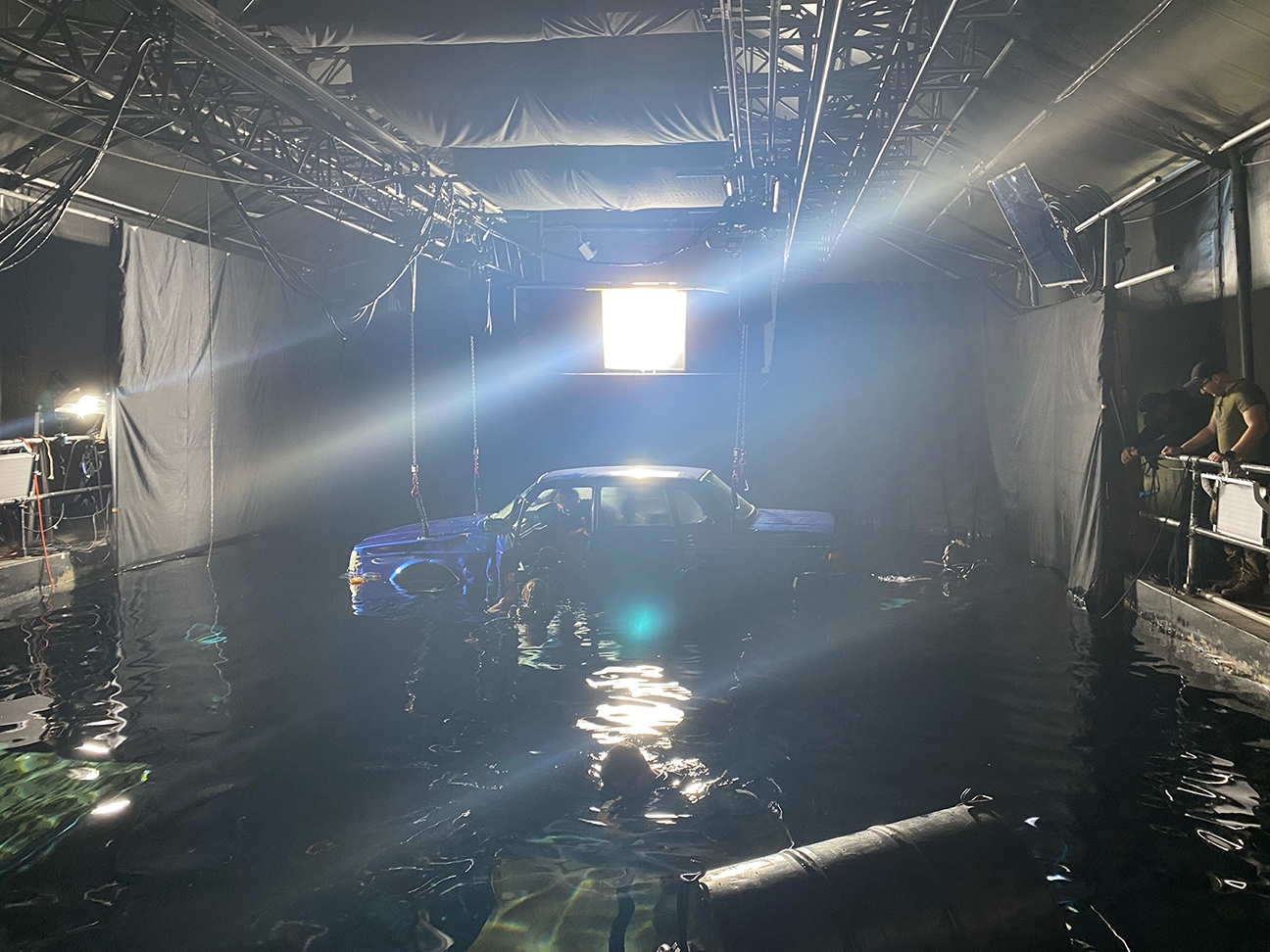
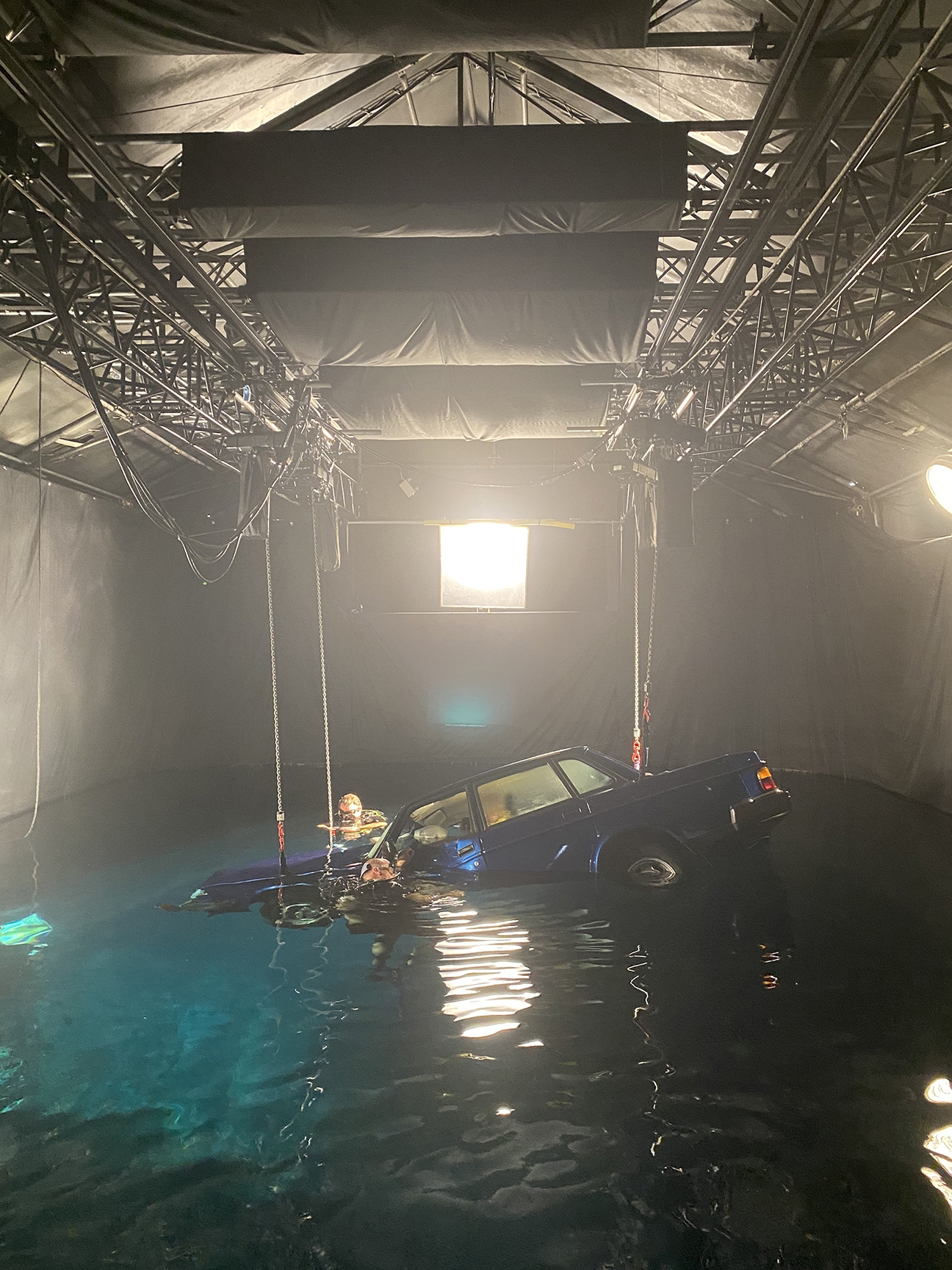
The project was colored at Ethos Studio in Los Angeles by Dante Pasquinelli. After the grade was finished, Braier tested options for a film print out to add analog grain texture to the piece. Working with the SHIFTai team at FotoKem, they did a film out to 35mm Kodak Vision3 2242 intermediate negative. Pasquinelli then did a final color pass after re-scanning that result.
Braier acknowledges that she was able to tap into the emotional depth of the songs on Subtract because of how much Sheeran’s music touched her. “You hear the songs and they immediately kind of touch your soul and break your heart,” she says. “All I had to do was then try to find the colors and the frames and the camera movements that are vibrating with those feelings and those emotions and supporting the song. It is kind of like dancing or jamming — so long as you're connected with the music and you're feeling it, then you are going to translate that into images. It was very important for me to hear the album and to love it and to feel very connected to that music to be able to portray it.”
Production photos courtesy of Natasha Braier.
The cinematographer’s feature work includes The Rover, The Neon Demon, Honey Boy and She Said.






